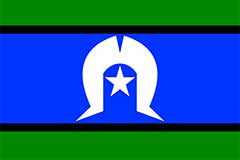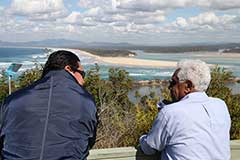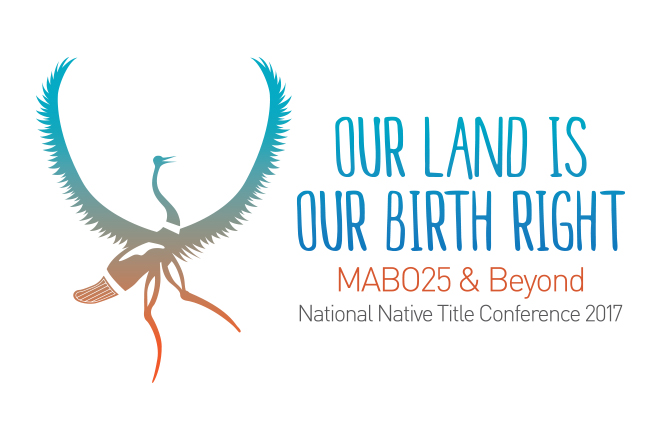Legislation / Key Provisions
Aboriginals Ordinance 1911 (Cth)
To be read with Aborigines Act 1910. After the Northern Territory became a territory of the Commonwealth on 1.1.1911 all South Australian laws remained in force until altered by a Commonwealth law. Chief Protector may undertake the care, custody or control of any 'aboriginal or half-caste' if in his opinion it is necessary or desirable. A protector or police officer may take 'any aboriginal or half-caste' into custody if he believes that person is not being properly treated. An 'aboriginal or half-caste' remaining within a prohibited area is guilty of an offence and may be removed. Repealed by Aboriginals Ordinance 1918.
Aboriginals Ordinance 1918
Combined the 1910 Act (SA) and the 1911 Ordinance (Cth), giving the Chief Protector wide-ranging powers over Aboriginal people. Repealed by Welfare Ordinance 1953.
Aboriginals Ordinance 1953 (No 2)
Amended definition of 'aboriginal' to remove references to 'half-castes'. Director made the legal guardian of all 'aboriginals'. Director may declare a person with an 'aboriginal' ancestor to be an 'aboriginal' if it is in that person's 'best interests' and that person requests the Director to do so. Director to keep a register of persons declared to be 'aboriginals'. Repealed by Welfare Ordinance 1953.
Welfare Ordinance 1953-60
Director of Welfare given extensive powers over the lives of people declared to be 'wards'. Although the Ordinance made no reference to Aboriginality, the exception of people eligible to vote from the class of people that could be declared to be wards meant that it could only apply to Aboriginal people. The Administrator may declare a person to be a 'ward' because that person 'stands in need of special care and assistance' owing to that person's 'manner of living'; 'inability, without assistance, adequately to manage his own affairs'; 'standard of social habit and behaviour'; or 'personal associations'. No person entitled to vote may be declared a ward. The Director of Welfare made the legal guardian of all wards. The Director to keep a Register of Wards. The Wards Appeal Tribunal to hear appeals against a wardship declaration. If the Director considered it to be in the best interests of the ward, a ward may be taken into custody; detained on a reserve or in an institution; or removed from one reserve or institution to another. The Administrator's authorisation required for the removal of a child under 14 years if it means removal from his/her parents. Director may make orders authorising police to enter, search and remove a child. A non-ward may not habitually live with a ward unless the non-ward is a relation. Director may order a ward not to live with another ward. A male non-ward may not live with or be in the company of a female ward after sunset. A ward may not marry without the consent of the Director. Director may manage property of wards. Repealed by Social Welfare Ordinance 1964.
Child Welfare Ordinance 1958
Replaced State Children's Act 1895 (SA). Similar definitions of 'destitute' and 'neglected' as in the 1895 Act. Director is the legal guardian of every State child to the exclusion of the child's parent or other guardian. A court may declare a child to be destitute, neglected, incorrigible or uncontrollable and commit the child to the care of the Director or another person, to be sent to an institution or released on probation. A State child who absconds from an institution or other placement is guilty of an offence. The Territory Administrator may declare a mission station, reformatory, orphanage, school, home or other establishment whether within the NT or not as an institution for the purposes of the Ordinance. A State child may be sent to a place within the Commonwealth to be placed under control, trained, educated, cared for and maintained. Repealed by Community Welfare Act 1983.
Welfare Ordinance 1961
Extends the definition of ward to include an Aboriginal person under the control of the Qld, WA or SA legislation entering the NT and allows for the removal of wards from the NT. If the removal of a ward would mean the separation of a child under 14 years from his/her parents or the separation of a parent from a child under the age of 15 years, then the court must be satisfied that 'necessary and adequate arrangements have been made for the 'maintenance, education and care of the child'. Repealed by Social Welfare Ordinance 1964.
Social Welfare Ordinance 1964
Restricted entry to reserves and assistance of the Department of Social Welfare to people who 'in the opinion of the Director are socially or economically in need of assistance'. A welfare officer can suspend the right of an 'aboriginal' to enter or remain on a reserve. Repealed by Community Welfare Act 1983.
Community Welfare Act 1983
Introduced the Aboriginal Child Placement Principle for the first time in legislation in Australia. The Minister may grant assistance to a person, family or group. The Minister is to act in accordance with the welfare of the child. In making orders in relation to a child in need of care the court must take account of the Aboriginal Child Placement Principle.
Adoption of Children Act 1994
Included the Aboriginal Child Placement Principle. Recognised traditional Aboriginal marriages for the purpose of adoption. Regulations Adoption of Children Regulation 1994 - a parent may record wishes regarding the suitability of the adoptive parents and regarding access to the child or giving or receiving information about the child.
Protectors' reports
From 1863 until 1911, the Northern Territory was annexed to South Australia.
In 1911, the Northern Territory Aboriginals Ordinance established the NT Aboriginals Department. The Chief Protector was appointed the 'legal guardian of every Aboriginal and every half-caste child up to the age of 18 years'.
In 1918, the Chief Protector's powers were extended. Under the Aborigines Ordinance 1918 , all Indigenous females were under the total control of the Chief Protector unless they were married and living with a husband 'who is substantially of European origin'.
In 1927, the Commonwealth Government set up an inquiry into Indigenous affairs in the Northern Territory. The report found that many Indigenous people were not paid wages, living conditions were appalling and that government-run institutions 'were badly situated, inadequately financed and insufficiently supervised'. The report also recommended that missions be given responsibility for Indigenous children.
The introduction of the Welfare Ordinance 1953 started the move towards assimilation through general child welfare laws. Indigenous and non-Indigenous children were now covered by the same law.' However only those people who had no voting rights could be made wards and at this time most Indigenous people could not vote.
In 1955, the NT Government decided that Indigenous children in homes and missions should be moved to homes in the southern States. By the close of the 1960s, children were being placed into foster care as institutions and homes were being closed. In 1971, 97 percent of all Territory children in foster care were Indigenous.
The assimilation policy was formally abolished by the Commonwealth Government in 1973, in favour of self-management by Indigenous people. In 1978, the Northern Territory was granted self-government by an Act of the Commonwealth Parliament. See the NT Laws page for any laws passed after this date.
Users are warned that these documents may contain words or descriptions which reflect the author's attitude or that of the period in which the item was written. These may be considered inappropriate today in some circumstances. Users should also be aware that these reports contain images and other references to deceased people which may cause sadness or distress, particularly to the relatives of these people.
Please note: only those sections specific to Aboriginal people have been digitised.
South Australia - Quarterly Report on Northern Territory
South Australia - Government Resident's Report on Northern Territory
- 1887 (PDF - 1317 KB)
- 1888 (PDF - 1129 KB)
- 1889 (PDF - 851 KB)
- 1898 (PDF - 677 KB)
- 1900 (PDF - 615 KB)
- 1901 (PDF - 489 KB)
- 1902 (PDF - 589 KB)
- 1903 (PDF - 458KB)
- 1904 (PDF - 432KB)
- 1905 (PDF - 748KB)
- 1907 (PDF - 701KB)
- 1908 (PDF - 904KB)
- 1909 (PDF - 816 KB)
- Northern Territory - Memorandum Prepared under the Direction of the Hon. L. E. Groom, Minister for External Affairs, July 1909, in Connexion with the Bill for the Acceptance of the Northern Territory, with some later figures. (PDF - 675KB).
- Northern Territory Report of the Government Resident for the year 1910 (PDF - 636 KB).
- Northern Territory Report of the Acting Administrator for the year 1911 (615 KB).
Northern Territory of Australia, Report of the Administrator
- 1912 (PDF - 1945 KB)
- 1913 (PDF - 1614 KB)
- 1914-15 (PDF - 1012 KB)
- 1915-16 (PDF - 1863KB)
- 1918 (PDF - 1286 KB)
- 1920 (PDF - 989 KB)
- 1921 (PDF - 750KB)
- 1922 (PDF - 364KB)
- 1923 (PDF - 649KB)
- 1924 (PDF - 618KB)
- 1925 (PDF - 1024KB)
- 1926 (PDF - 722 KB)
Report on the Administration of North Australia for the year ended 30th June
- 1928 (PDF - 283 KB)
- 1929 (PDF - 428 KB)
- 1930 (PDF - 546 KB)
- 1931 (PDF - 563 KB)
- 1932 (PDF - 680 KB)
- 1933 (PDF - 705 KB)
- 1934 (PDF - 1002 KB)
- 1935 (PDF - 1127 KB)
- 1936 (PDF - 1109 KB)
- 1937 (PDF - 1696 KB)
Report on the Administration of the Northern Territory
- 1937-38 (PDF - 1468 KB)
- 1938-39 (PDF - 683 KB)
- 1939-40 (PDF - 544 KB)
- 1940-41 (PDF - 475 KB)
- 1944-45 (PDF - 787 KB)
- 1946 (PDF - 1495 KB)
- 1946-47 (PDF - 756 KB)
- 1947-48 (PDF - 649 KB)
- 1948-49 (PDF - 481 KB)
- 1953 (PDF - 1358 KB)
- 1955 (PDF - 1735 KB)
- T1955-56 (PDF - 1831 KB)
- 1956-57 (1,517 KB
- 1958-59 (PDF - 3900 KB)




